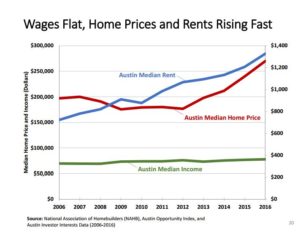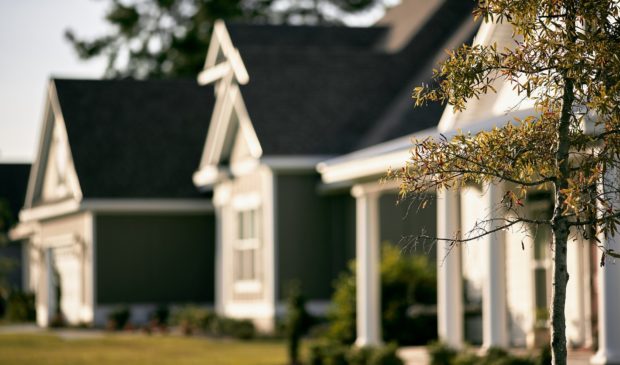Council seeks more details from long-term housing plan
Friday, March 24, 2017 by
Chad Swiatecki Some City Council members felt underwhelmed with the latest version of the city’s Strategic Housing Plan, one puzzle piece in an assortment of plans and codes city leaders are hoping will help solve Austin’s affordability and transportation woes over the next 10 years.
Presented at Thursday’s Council meeting, the plan that was an update of a draft delivered last summer reinforced the need for just over 135,000 new housing units in the next decade to meet a 34 percent growth rate for the entire Austin metro region.
One of the most jarring findings of the report was the calculation that the building cost – minus land acquisition – of closing Austin’s existing affordable housing gap would be nearly $6.5 billion. The figure to meet the city’s long-term affordable housing needs is more than $11 billion.
The plan found an acute need for 48,000 for “deeply affordable” homes for residents earning less than $25,000 per year, and set a goal of adding 60,000 affordable residential units to the city’s housing stock over the next decade.
Other stated goals include pursuing general obligation bonds to help fund affordable housing creation and streamlining building code processes on affordable units, expanding community land trusts, creating a targeted property tax exemption to reward housing preservation and creating more defined criteria for affordable housing.

The statistics-heavy document showed how Austin got into its current housing predicament, with the median home income barely increasing – it is currently just over $60,000 a year – since 2006 while rents have nearly doubled to more than $1,300 a month and home prices have climbed by more than 25 percent to approximately $270,000.
The report, which is set to go to the Planning Commission next week and come back to Council for possible adoption as a CodeNEXT amendment next month, also recommended achieving 10 percent affordable housing stock in each district and locating 75 percent of all new housing within half a mile of predetermined transit corridors.
That wasn’t enough for Council Member Ann Kitchen, who said she wants to see goals that take into account the existing demographics and geography of each Council district.
“I’m asking for more specifics because each district is different,” she said. “I’m more concerned about, where have we historically not had affordable housing and where have we historically had preservation of housing?
“How can we take these goals and be more specific as far as where we apply them?” she continued. “If I just have a number I’m working toward but don’t have a relationship with things being along corridors, I need more to work with.”
Erica Leak, manager of planning, policy and outreach for the city’s Neighborhood Housing and Community Development Department, said the plan is meant to work in concert with other planning and development documents in various states of completion with the city, with the goal of making Austin more accessible to all.
“The idea of fair housing is for all people to have access to the same opportunities,” she said. “This plan recommends continuing with the Fair Housing Action Plan, to get to those ideas of economic equity.”
Council Member Greg Casar said he wants to see information on the school quality, amenities and transit access that define various housing concentrations in different districts so CodeNEXT and other planning tools can be applied sensibly.
Council Member Leslie Pool called for more detailed maps of available and strategic tracts of land to steer development, and creation of a process to track affordable housing units as they come for planning approval and progress toward completion to meet market demand.
“It would be helpful to see what property is available, so if we’re targeting to meet goals we can encourage developers go there,” Pool said. “This is somewhat ephemeral to me. I’ve talked about this info for years and I’m looking for something more concrete to hang onto.”
Download (PDF, 2.11MB)
The Austin Monitor’s work is made possible by donations from the community. Though our reporting covers donors from time to time, we are careful to keep business and editorial efforts separate while maintaining transparency. A complete list of donors is available here, and our code of ethics is explained here.
You're a community leader
And we’re honored you look to us for serious, in-depth news. You know a strong community needs local and dedicated watchdog reporting. We’re here for you and that won’t change. Now will you take the powerful next step and support our nonprofit news organization?







